Stunning papergraphics
Yulia Brodskaya makes elaborate typographic creations entirely out of paper. She calls them PAPERgraphics.
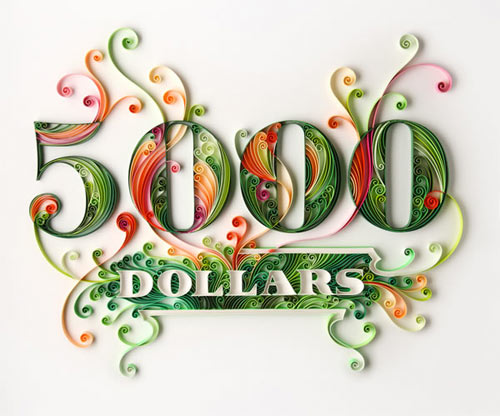
This is like Si Scott in 3-D.



This site is made possible by member support. 💞
Big thanks to Arcustech for hosting the site and offering amazing tech support.
When you buy through links on kottke.org, I may earn an affiliate commission. Thanks for supporting the site!
kottke.org. home of fine hypertext products since 1998.
Yulia Brodskaya makes elaborate typographic creations entirely out of paper. She calls them PAPERgraphics.

This is like Si Scott in 3-D.
IANAHRSYMMV**, but here are some well-known English language logos redesigned and translated into Hebrew language logos. Nice student work from a class taught by Oded Ezer.
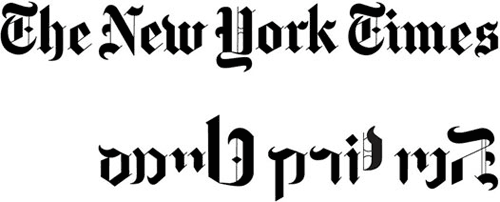
** I am a not a Hebrew reader so your mileage may vary.
Posters of classified ads from local newspapers, gussied up by a group of designers chosen by the Type Directors Club.
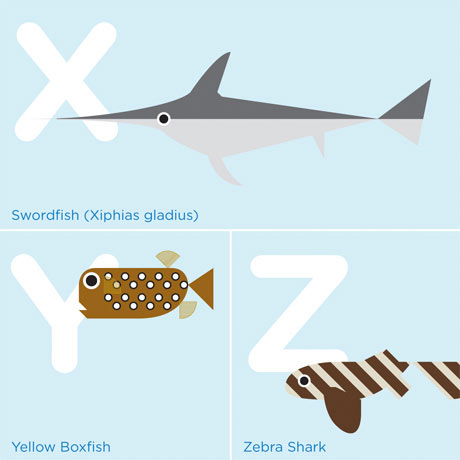
That’s from a lovely poster that James Mattison made for his daughter.
The theme and title of the piece was ‘Learn your A-B-Sea’ and took the format of an alphabet chart illustrated with fish and sea creatures that could be found in the local stretch of water, the Arabian Gulf.
(via @h_fj)
Phil Gyford’s spot-on critique of the number and quality of infographics currently choking the web. As Phil notes, far too many infographics decorate and don’t communicate.
The Selby has some shots of Cindy Gallop’s apartment, which has to be one of most personality-drenched living spaces I’ve seen since Martha Stewart’s house. (Not that I’ve seen Martha Stewart’s house. But I can imagine.) Here is, for example, Gallop’s Gucci chainsaw:
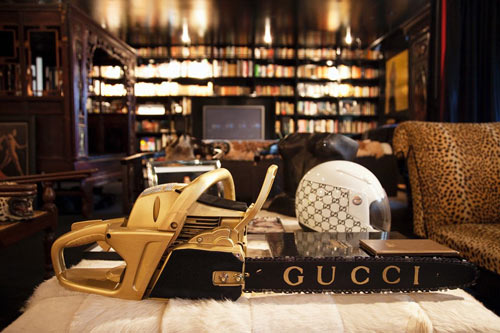
There is also a video tour on Vimeo and a 2006 New York magazine article about how Gallop turned a former YMCA locker room into her “ultimate bachelorette pad”.
She had a specific vision for her new home. “I was looking for something dramatic,” she says. So she told her designer, Stefan Boublil of the Apartment, a creative agency in Soho, “When night falls, I want to feel like I’m in a bar in Shanghai.”
Dribbble (that’s 3 ‘b’s…triple letters are the new omit the vowels) is a show and tell site for designers to display their works-in-progress. The color tags are a fine idea; ex: red. Launched, I believe, just today after a lengthy closed beta.
Based on their great Mag+ concept unveiled late last year, Bonnier and BERG have developed a really nice looking iPad version of Popular Science. No page-turning business…you swipe left/right to page through stories and then scroll to read through single stories.
What amazes me is that you don’t feel like you’re using a website, or even that you’re using an e-reader on a new tablet device — which, technically, is what it is. It feels like you’re reading a magazine.
It’s nice to see the original concept come to life so quickly and completely. Get it in the App Store.
Now this is interesting…Fred Brooks, author of The Mythical Man-Month (which should be subtitled “If You Make Software As Part of a Team You Should Read This Book Immediately Like Now What Are You Waiting For Dummy?”) has a new book out called The Design of Design.
Effective design is at the heart of everything from software development to engineering to architecture. But what do we really know about the design process? What leads to effective, elegant designs? The Design of Design addresses these questions.
These new essays by Fred Brooks contain extraordinary insights for designers in every discipline. Brooks pinpoints constants inherent in all design projects and uncovers processes and patterns likely to lead to excellence. Drawing on conversations with dozens of exceptional designers, as well as his own experiences in several design domains, Brooks observes that bold design decisions lead to better outcomes.
The author tracks the evolution of the design process, treats collaborative and distributed design, and illuminates what makes a truly great designer. He examines the nuts and bolts of design processes, including budget constraints of many kinds, aesthetics, design empiricism, and tools, and grounds this discussion in his own real-world examples-case studies ranging from home costruction to IBM’s Operating System/360. Throughout, Brooks reveals keys to success that every designer, design project manager, and design researcher should know.
For your Lost party tonight: dozens and dozens of Dharma Initiative food labels that you can print out and affix to bottles and jars.

Includes steak sauce, cake mix, tuna, sake, and guacamole dip.
To prove a point about the utility of A/B testing, a marketing blogger helped a homeless man modify his begging approach and increased his earnings by over 100%.
What we did here was quite different than what most homeless people would do. We focused on a different angle. We already have the “I’m homeless, help me” stigma attached to people that are sitting on the side of the street with a cup, so we don’t necessary need to make that a prominent part of our banner. The next big difference is that we changed colors and went from cardboard to white to spark the interest of people walking by instead of automatically having negative associations that they have with cardboard and homeless people.
Writer Gay Talese did something similar last year. (via the browser)
This is stunning. A version of this was presented at SIGGRAPH in August 2009. (via jimray)
For my future reference: Well Placed Pixels, a blog highlighting beautiful software. (via df)
The Department of Architecture and Design at MoMA has made a, er, symbolic acquisition of the @ symbol.
The acquisition of @ takes one more step. It relies on the assumption that physical possession of an object as a requirement for an acquisition is no longer necessary, and therefore it sets curators free to tag the world and acknowledge things that “cannot be had” — because they are too big (buildings, Boeing 747’s, satellites), or because they are in the air and belong to everybody and to no one, like the @ — as art objects befitting MoMA’s collection. The same criteria of quality, relevance, and overall excellence shared by all objects in MoMA’s collection also apply to these entities.
Legendary art director George Lois shares his memories about his twelve favorite Esquire covers.
He tells how the job came about: “I was a well-known advertising agency guy, and the former editor of Esquire, Harold Hayes, he called me up. We met at The Four Seasons, and he said, ‘Could you help me try to do better covers?’ I got this Bronx accent, and he had this southern drawl, and it must have been a funny discussion. ‘You have to go outside and find a designer, a guy who’s talented at graphic design, but understands politics, culture, and movies,’ I told him, and he said, ‘Do me a favor, could you do me just one cover?’ I said, ‘Okay, I’ll do you one.’”
Here’s one I’d never seen before, featuring Chief John Big Tree, the supposed model for the Indian Head nickel.
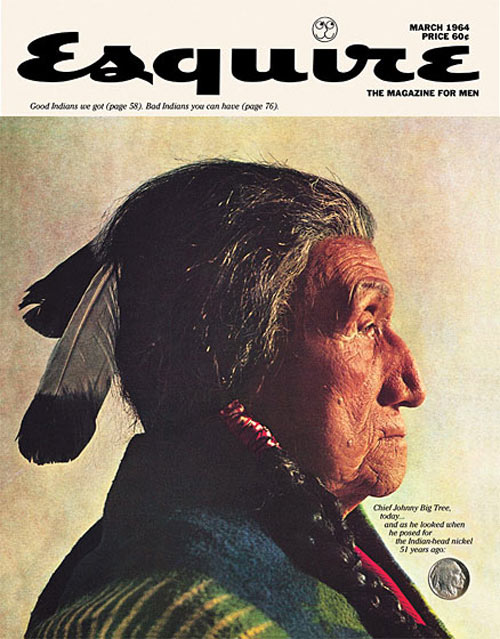
I like these Alphaposters by Happycentro, especially the gorgeous Lowercase F Island:
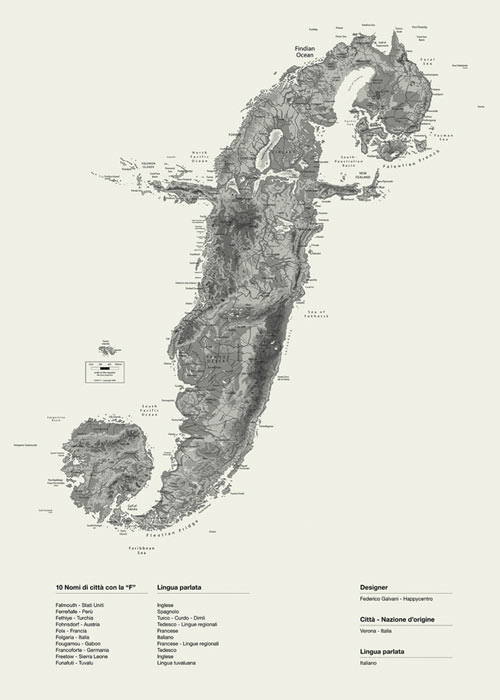
A number of designers, artists, and photographers share how they combat creative block. One solution begins:
Slice and chop 2 medium onions into small pieces.
Put a medium sized pan on a medium heat with a few glugs of olive oil.
Add the onions to the pan, and a pinch of salt and pepper.
All nine of the planets in our solar system are represented in these wonderful posters by Ross Berens.
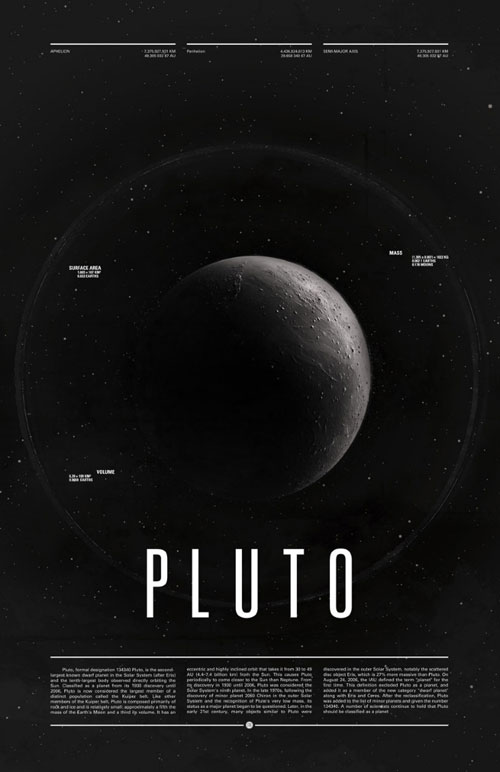
Pluto. Never forget.
Fortune magazine used to have some of the best graphics and design around…here are some of the best.
For all you UI nerds out there, a four-minute video collection of some of the multi-touch gestures and actions on the iPad from Wednesday’s event.
Here are the annotations. (via @h_fj)
You know it, you love it, the Feltron Annual Report for 2009. This year, he asked people who knew him to report data.
Update: Here’s a nice interview with Felton about the report.
From the same folks who brought us the excellent Letters of Note comes Letterheady, a collection of interesting letterheads. Includes letterhead from Albert Einstein, Adolf Hitler, and my favorite: Robot Salesmen Ltd.

Magazine publishers Bonnier and BERG, a London design consultancy, have collaborated on a digital magazine prototype called Mag+. The conceptual device is impressive in its restraint and its truth to form and function.
We find that the graphical page-turning metaphors that you see quite frequently in web-based e-magazine readers are not terribly believable, and they don’t feel very honest to the form of the screen. […] Scrolling systems are more appropriate to what we’re dealing with.
Sing it, brother! Also of note is the way that the video takes the conventional “let me talk over some graphics” screencast and presents it in a much more compelling way.
I.D. Magazine folds after 55 years of publication ; the design world mourns. The staff didn’t even know it was coming.
A lengthy discussion of the typeface for the London Underground, both the old version by Edward Johnston as well as the refresh.
“We continue to make subtle changes” Ashworth admits, “but we’re very wary about doing too much and are always happy to roll back changes if they end up not feeling ‘right.’
“The most recent major change was to the numbers 1 and 4 earlier this year. Not a lot of people noticed until a poster appeared advertising engineering work on the 14th of February — then I got A LOT of emails.”
Sometimes a book cover is so bad that it keeps you from reading the words within, even if those words are some of the best Twain ever wrote.
The cover of the Signet Classic [version of The Adventures of Huckleberry Finn] was a drawing of a ruddy-cheeked scamp, buck teeth prominent, clutching an apple, with a perky little newsboy tam cocked at a saucy Depression-era angle. Here Huck bore an alarming similarity to both Jerry Mathers of “Leave It to Beaver” and Britney Spears. Revolting. So once again my efforts to polish off this peerless classic were stymied. I could never get more than a few pages into the book before the illustration on the cover made me sick.
What the world needs is a great flag, a flag of pure bliss. Here’s one of the intermediate steps to the finished product; it’s an average of all the world’s countries’ flags weighted by population.

Stay Connected